In order to understand propaganda, it is important to look at the historical context, who produced it, and who its target audience is. Today, the ability to make propaganda has diffused with the introduction of modern techniques which allows individuals produce their own propaganda. Historically, the ability to create propaganda was limited to those with access to printing presses and with resources to work them. The target audience in older propaganda was often illiterate and uneducated peasants, who could not read but can definitely see the caricatures of an ethnic group.
It was usually intended for local consumption for multiple possible reasons such as to stir up sentiment for a particular cause or give legitimacy to a regime established by a foreign power. This was particularly popular during WWII with Axis aligned states and the subsequent communist states. Within a single country, posters produced by the military, monarchists, fascists, nationalists, socialists, communists, and interfering powers all vied for influence over the people. With this in mind, it is important to see how the narratives change and progress.
The Balkan states with their unique history have produced a far range of propaganda. Looking at this propaganda allows us to look at states as they are; complex units with different factions competing for power over a limited population. Simplifying history into stereotypes and generalizations prevents us from fully understanding and appreciating how heterogeneous society is and helps perpetuate conflicts by laying the blame of historical wrongs on whole societies instead of the individuals responsible.
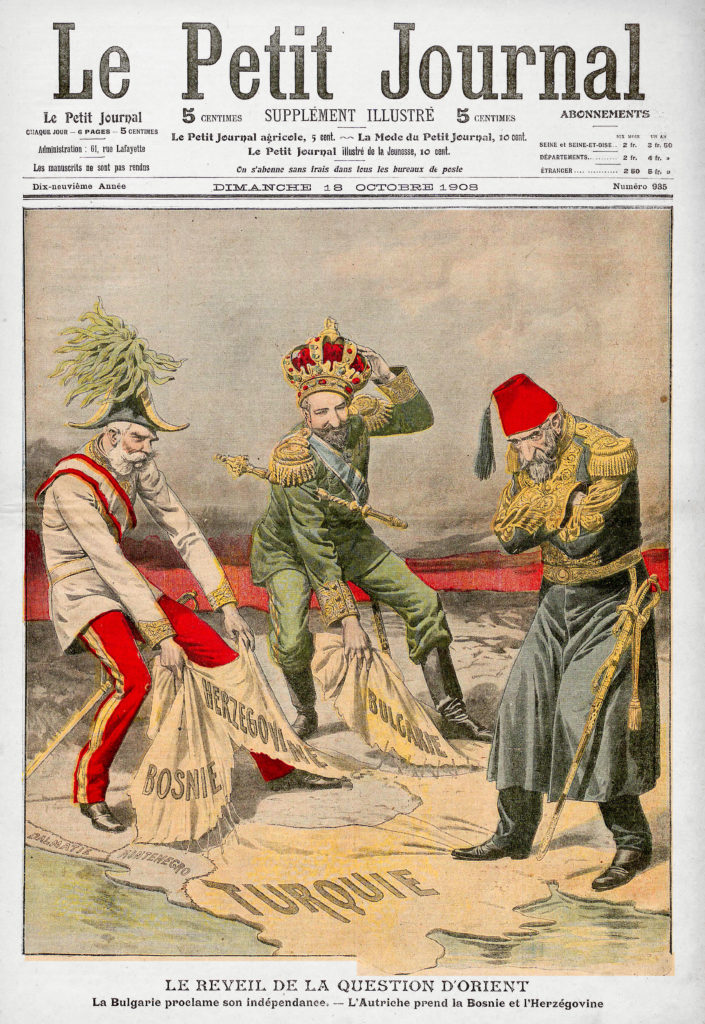
This French newspaper article portrays the end of the Ottoman empire, with an obviously upset Ottoman soldier unhappy with how events in the region were progressing. In Bulgaria, Prince Ferdinand was declared Tsar, or king, while the Austria-Hungary empire annexed Bosnia & Herzegovina.
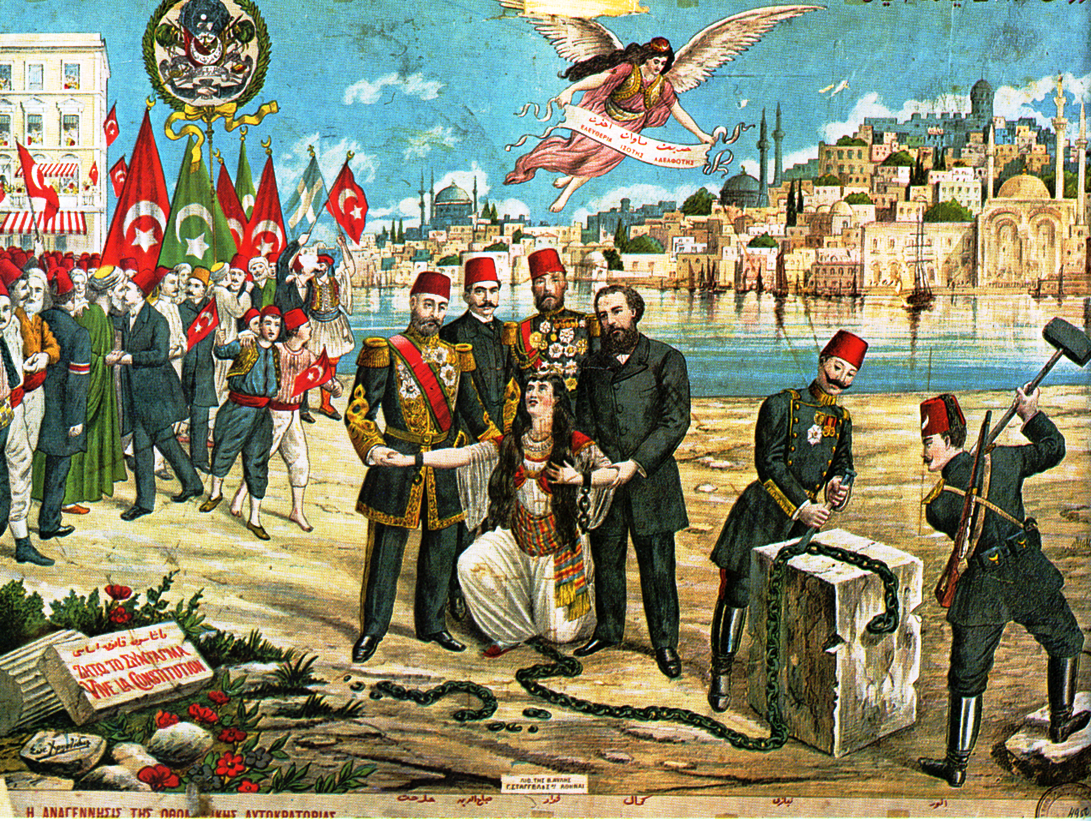 In a different portrayal of the Ottomans, the Young Turk are shown to be freeing the Ottoman population from their shackles put on by the Sultan. The plaque reads “Long live the Constitution” which was a key victory for the Young Turks.
In a different portrayal of the Ottomans, the Young Turk are shown to be freeing the Ottoman population from their shackles put on by the Sultan. The plaque reads “Long live the Constitution” which was a key victory for the Young Turks.
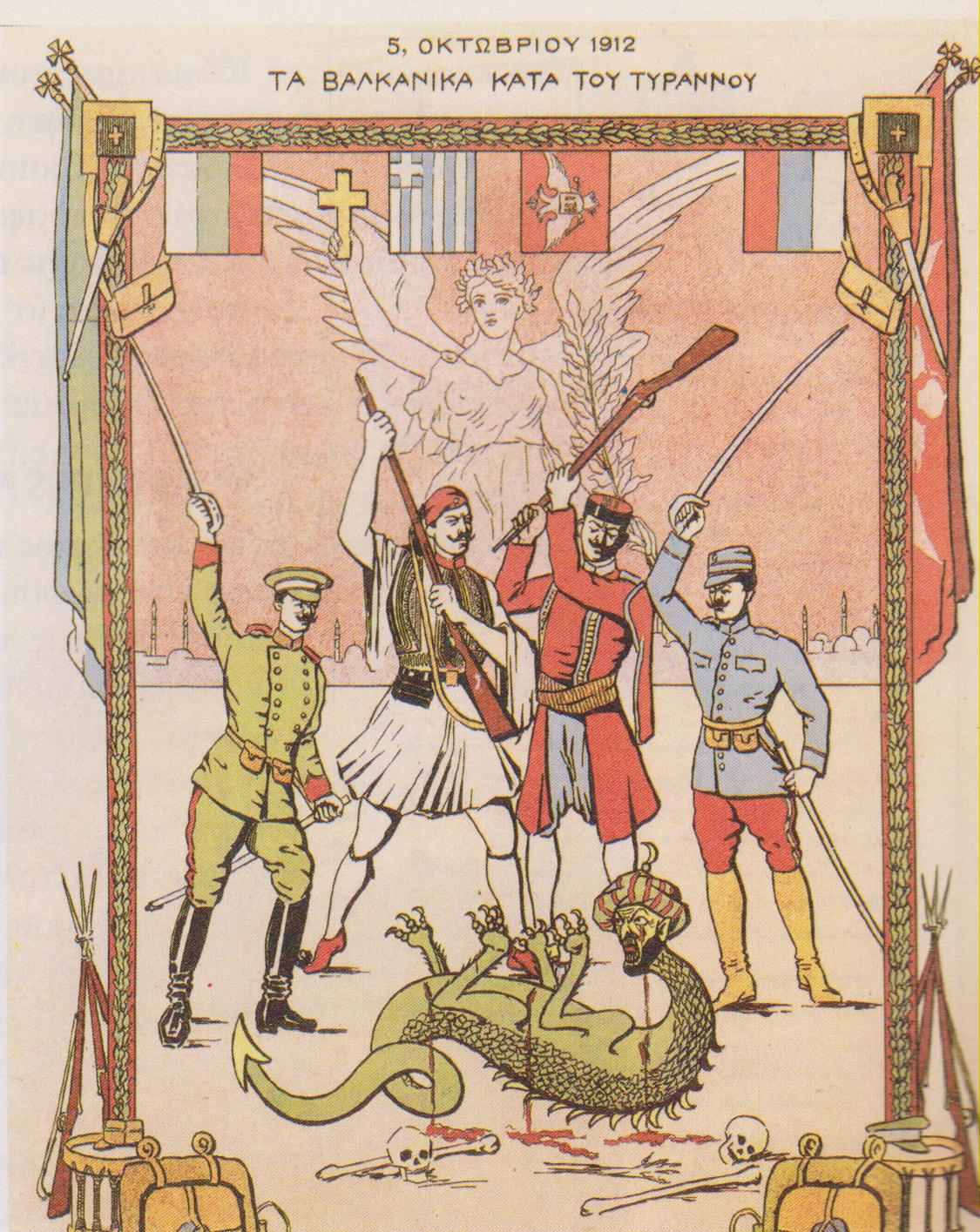
This poster portrays the first Balkan war, in which the many newly independent states fought against the Ottomans. The emphasis is on the Christian states uniting to fight against the demonic Muslim.
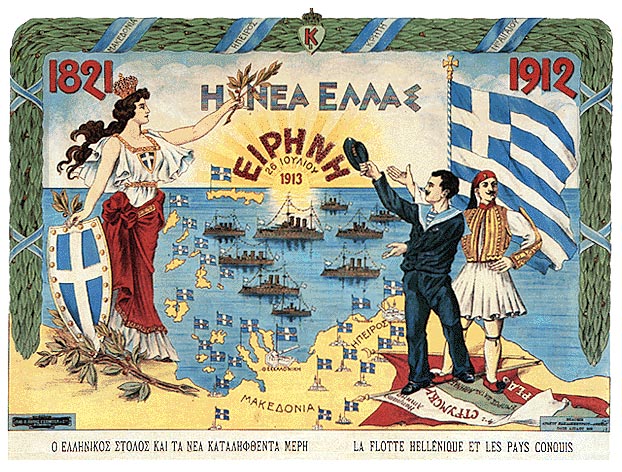
This unity did not last, as the new states had competing ideas over what land belong to who. The Greek sailor and soldier standing on the Bulgarian and Turkish flag shows this sentiment fairly clearly.
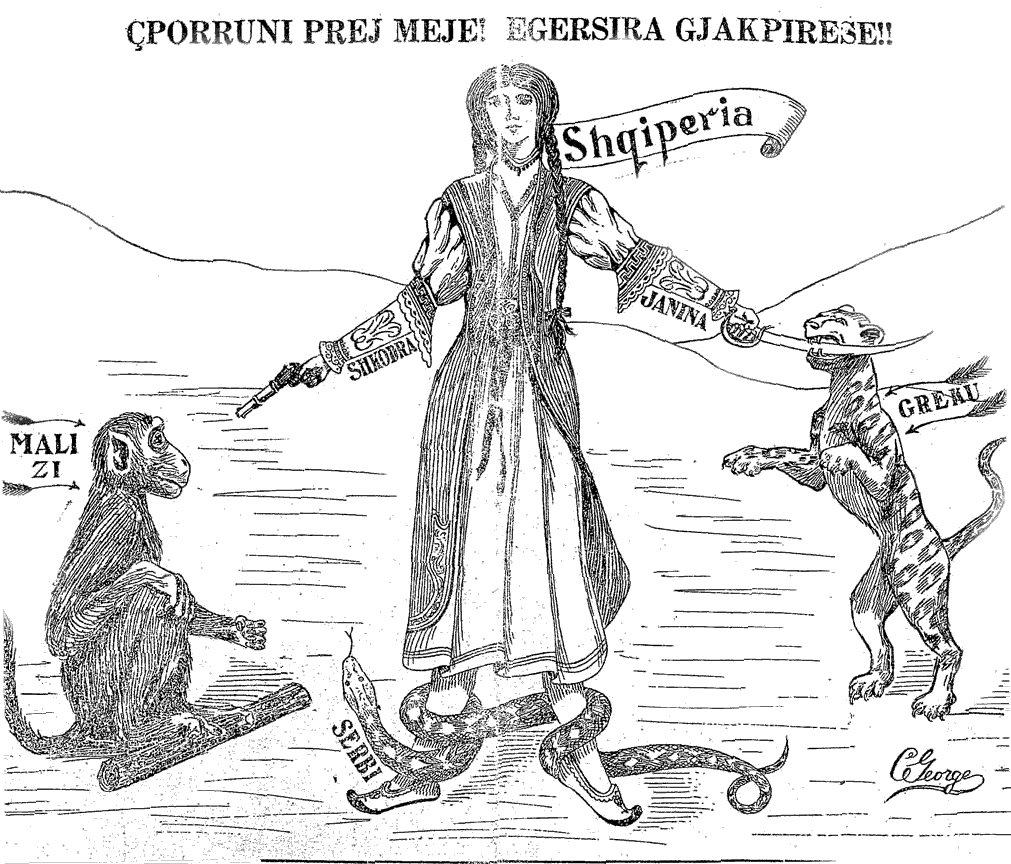
Newly independent Albania, a beautiful young woman, also shows this sentiment in her fiercely defending herself from encroaching neighbors. Montenegro is depicted as the monkey on the left, Greece as the tiger on the right, and Serbia as the snake on the bottom.
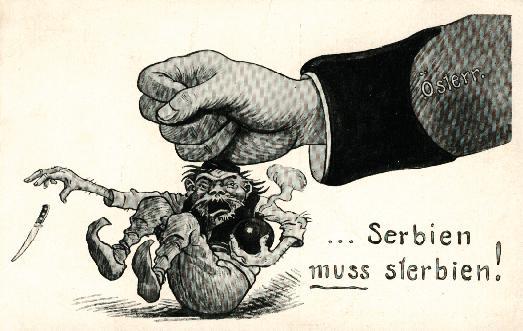
This Austrian poster depicting Serbians as bomb throwing trolls after the death of Archduke Franz Ferdinand. It shows the demand for firm retribution for the act, both of which are considered to be what sparked WWI. Some believe that a softer punishment would have prevented Russia from declaring war on Austria-Hungary.
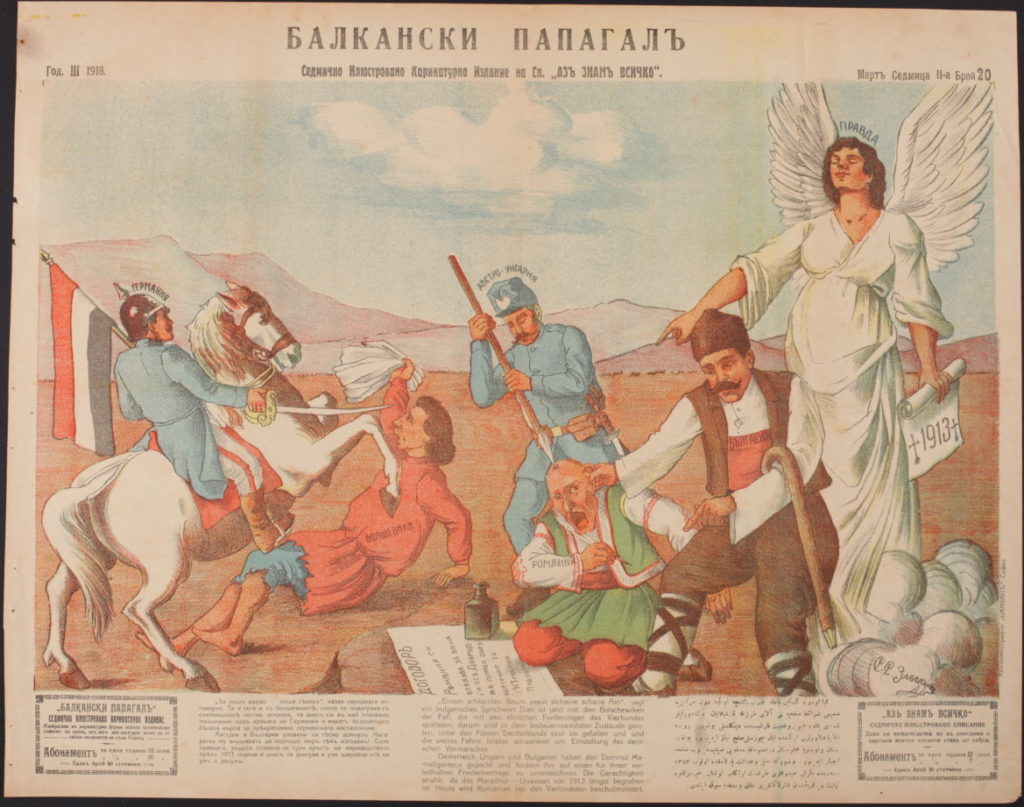 This Bulgarian poster from the “Balkan Parrot” presents the Central powers in WWI fighting against the Romania and Bolsheviks, depicting the two as nearly defeated. The Bolsheviks are waving the white flag while the Romanians are signing a contract on the Bulgarian’s terms. It was published in March of 1918, shortly before the war turned against the Central Powers.
This Bulgarian poster from the “Balkan Parrot” presents the Central powers in WWI fighting against the Romania and Bolsheviks, depicting the two as nearly defeated. The Bolsheviks are waving the white flag while the Romanians are signing a contract on the Bulgarian’s terms. It was published in March of 1918, shortly before the war turned against the Central Powers.
![“Conversation near Constantinople [Istanbul]”](http://vostokian.com/wp-content/uploads/2017/05/Carigrad-1.jpg)
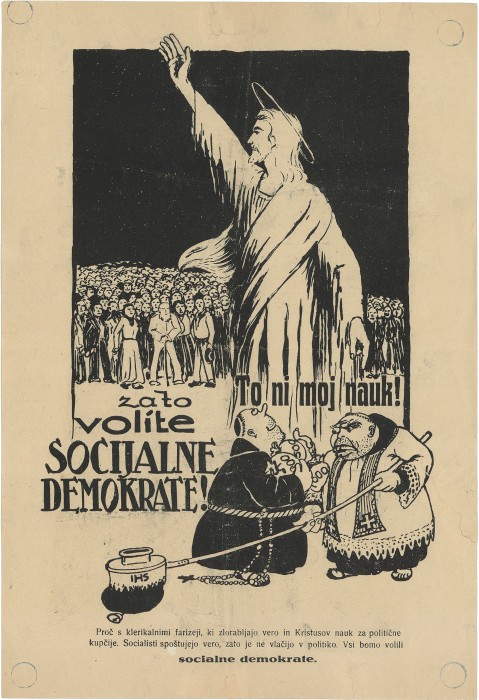
This poster from Slovenia shows the greedy priests taking money from the masses. The social democrats claim to be above manipulating the faithful. It is from 1919, when socialist movements were building up strength both in the region and around the world.
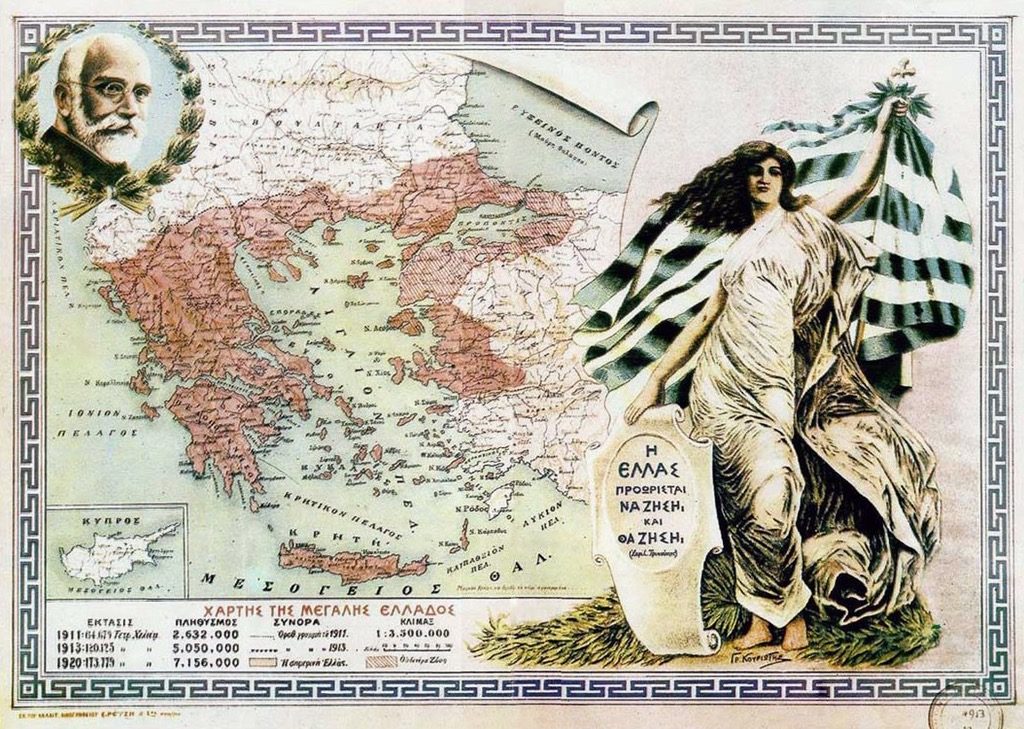 This poster shows the Greek territorial ambitions promoted by the MegaliIdee during the Greco-Turkish War between 1919–1922. This eventually led to the birth of the end of the Ottoman empire and the birth of the Republic of Turkey.
This poster shows the Greek territorial ambitions promoted by the MegaliIdee during the Greco-Turkish War between 1919–1922. This eventually led to the birth of the end of the Ottoman empire and the birth of the Republic of Turkey.

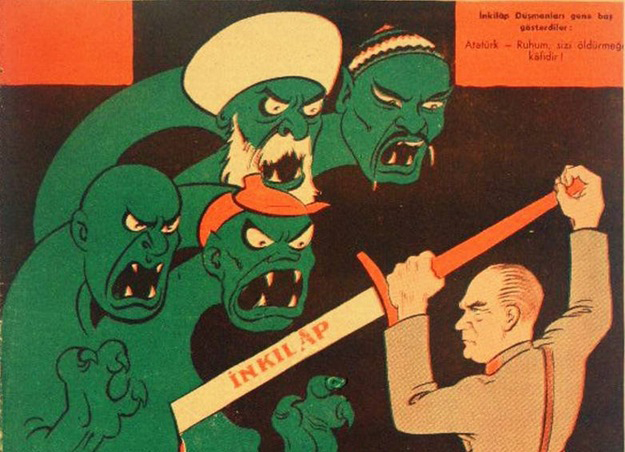
These two posters support Atatürk in the Turkish war of independence. In the first, a soldier is blowing down cards to show the rapid advances to Istanbul. The second depicts Atatürk cutting down the demons of a the Ottoman empire as he supported a more modern, secular state. His sword features the inscription “Reform”. It is interesting to note that the similarity in the depiction of the Ottoman empire used in this and the earlier Balkan War poster.
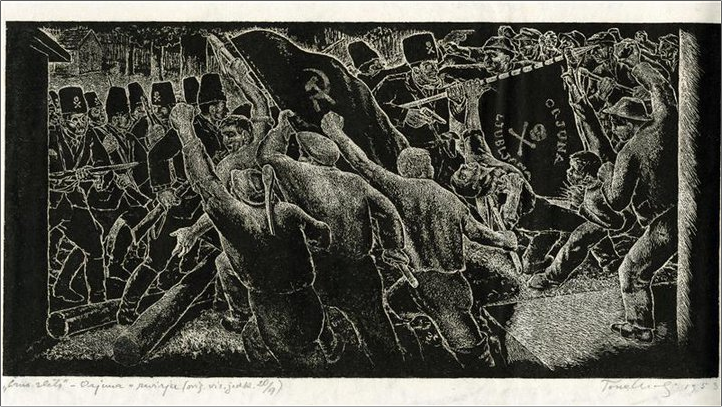
This poster from the Yugoslavian fascist group ORJUNA was produced in the interwar period. In the background is the well-organized ORJUNA, fighting against communists whose pickaxes are no match for their guns. This period in Yugoslavia saw much fighting between fascists, communists, and nationalists.
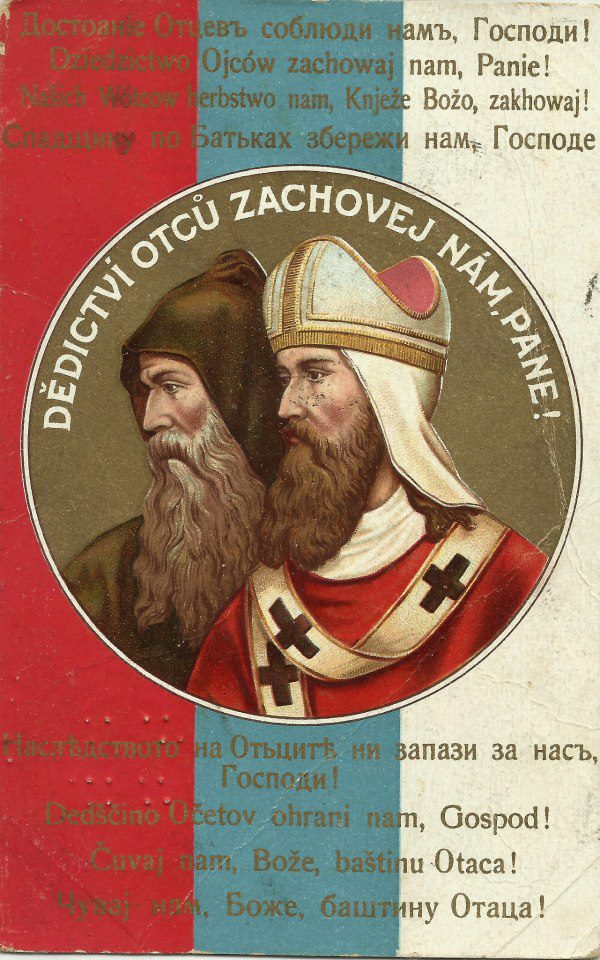
This postcard shows Cyril and Methodius, the inventors of the Cyrillic alphabet used by many Slavic nations. It includes the same phrase in Czech, Russian, Polish, Serbian, Ukrainian, Bulgarian, Slovene, Croatian and Serbian in support of Slavic unity over a shared culture. This is an interesting contrast to today where neighboring Slavic countries have bitter arguments over the ethnic origins of historical figures, land, food, and more.
The next article will focus on propaganda posters from WWII and then the communist and modern era. The WWII era posters feature a complex mix of communism, anti-communism, anti-Semitism, fascist, and nationalist messages. The modern posters will present the debate of inclusion and exclusion as well as globalism in the age of the EU.

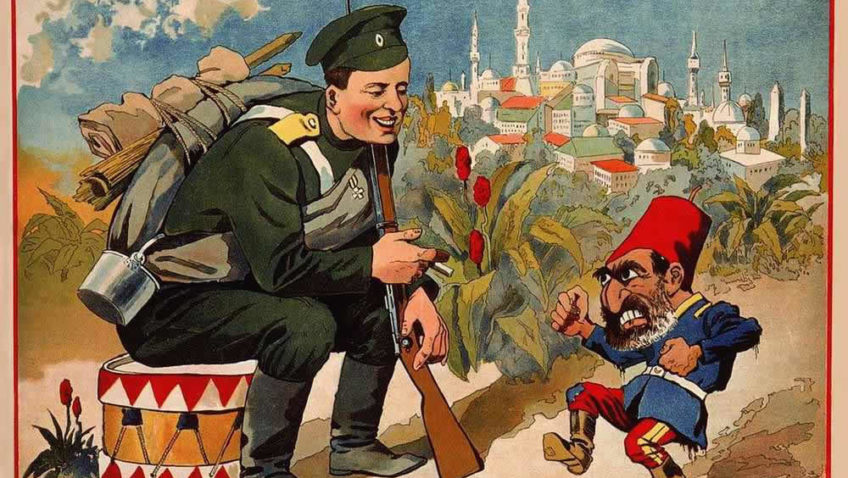
Oh my , very good